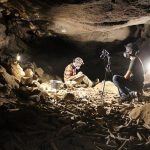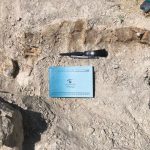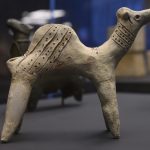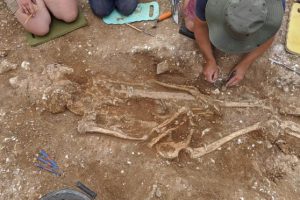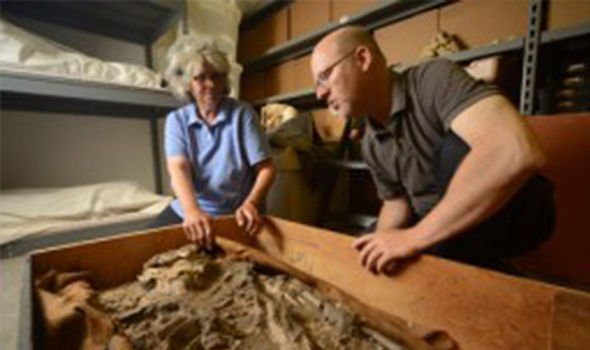
Woolley’s records indicated that he had shipped a skeleton over, and the team digitizing his records had uncovered pictures of the excavation, which showed the skeleton being removed from its grave. A researcher on the digitization project, William Hafford, mentioned the records to Janet Monge, the museum’ chief curator.
Woolley’s team uncovered the remains 40 feet (12 meters) below the ground, beneath the remains from the cemetery itself, which dates to 2500 BC. The body was found in a deep layer of silt that archaeologists believe was leftover from a massive flood.
The remains indicate they are those of a well-muscled man who died at 50 and would have stood approximately 5-feet, 10-inches tall.
A similar find was made in 2016 by a group of archaeologists led by the Woods Hole Oceanographic Institution and the Hellenic Ministry of Culture and Sports. They discovered a 2,050-year-old human skeleton during the excavation of the famous Antikythera shipwre.
Dr Hannes Schroeder, an expert in ancient DNA at the Natural History Museum of Denmark in Copenhagen said: “Against all odds, the bones survived over 2,000 years at the bottom of the sea and they appear to be in fairly good condition, which is incredible.”
Dr Brendan Foley, a marine archaeologist with the Woods Hole Oceanographic Institution said: “Archaeologists study the human past through the objects our ancestors created.
“With the Antikythera shipwreck, we can now connect directly with this person who sailed and died aboard the Antikythera ship.”
ARCHAEOLOGISTS were stunned when a 6500-year-old skeleton was rediscovered in the basement of a museum.
By CHARLIE BRADLEY
from: Express Newspapers

